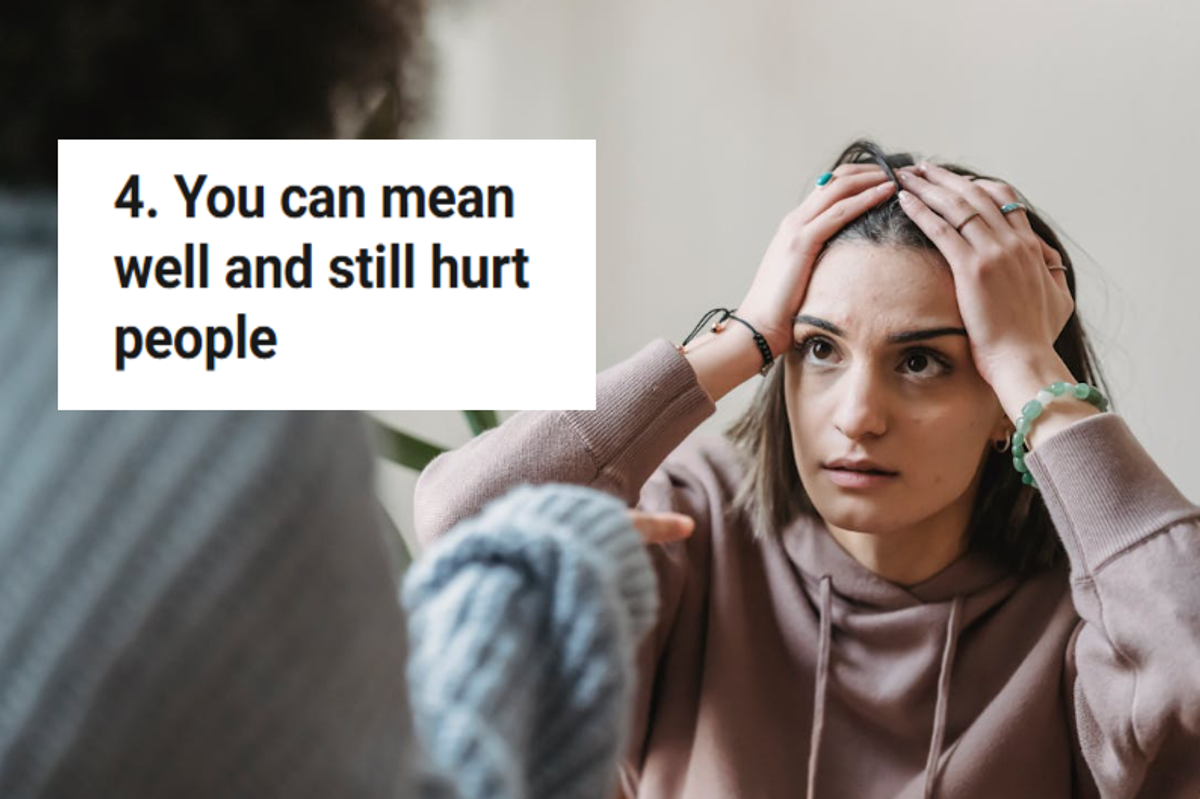Watch California's wildfires spread in this wild time-lapse video.
California is burning, and these photos and video explain why.
California is burning.
Photo by Mark Ralston/AFP/Getty Images.
The wildfires that scorched over 300,000 acres of land last year have finally been contained, but The Golden State still finds itself in the midst of a five-year drought affecting over 34 million of its residents as of March 2016, according to the U.S Drought Monitor.
Filmmaker Jeff Frost recently uploaded a time-lapse video depicting the power of last year's wildfires as they spread across the state.
GIF via Jeff Frost/Vimeo.
Terrifying, isn't it?
With summer on the horizon and the El Nino storms offering some but relatively little reprieve for many parts of California, the drought is causing "perfectly terrible" conditions for forest fires to once again rear their ugly heads.
Here are 11 examples of what it might look like if they do and a few facts to keep you prepared.
1. Wildfires are devastating.
Image via Jeff Frost, used with permission.
On average, we lose more than 4 million acres of land to wildfires each year. This photo depicts just a few of the 76,067 acres that last September's Valley Fire scorched through in a matter of days.
2. They spread at an insane pace.
GIF via Jeff Frost/Vimeo.
If the wind is right, a wildfire can travel at speeds of up to 14 mph, engulfing an area as massive as this San Diego hillside in a matter of minutes.
3. They can turn nature against itself.
Image via John Newman/U.S. Forest Service/Wikimedia Commons.
Extreme droughts like the one California is currently facing can often turn lush, green vegetation into little more than dried-out kindling capable of not only starting a fire, but determining the direction and manner in which it spreads.
In some parts of California, citizens are actually detesting what little water El Niño's storm system has given them, claiming that the rain will actually worsen the effects of fire season by helping grass grow taller across highways and vacant properties.
4. Wildfires are also INCREDIBLY expensive to fight.
Image via Andrea Booher/FEMA/Wikimedia Commons.
The average annual amount it has cost the United States to fight wildfires since 2000? About $1.4 billion. That's enough money to buy everyone in the country *three* bottles of Fiji water. Three!
5. They can cause lasting health problems.
Image via Jeff Head/Flickr.
Beyond the immediate damage they can cause, wildfires also pump the atmosphere full of carbon-monoxide-ridden smoke, which in great enough quantities can cause bronchitis and premature death for those with heart, respiratory, and lung conditions.
At this time last year, the entirety of California was basically the smoking section of a 1990s-era Pizza Hut. Who knows what the long-term effects will come of this year's fires.
6. They destroy thousands of homes each year.
GIF via Jeff Frost/Vimeo.
Since 1990, more than 17,000 homes and structures have been lost to wildfires in California alone. That Valley Fire I mentioned? It tore through 1,300 homes in just a couple days, forcing thousands to flee to state-run encampments in the chaos. One such journey through the flames was documented by an Anderson Springs resident, and it is horrifying.
7. They can change the weather.
Image via iStock.
As wildfires grow, they often create their own wind in order to fuel the massive chemical reactions taking place inside them. These "in-draft" winds can reach speeds of over 60 mph, overpowering the large-scale, global wind patterns surrounding them and allowing wildfires to move in unpredictable directions and intensify seemingly at random.
8. Oh, and did I mention the FIRENADO?!
Image via iStock.
Yes, a firenado — which is a nightmarish combination of a fire and a tornado, in case you're curious — occurs when a fire's winds are powerful enough to create a vortex within itself. Why the Syfy channel has spent years trying to scare us with Sharknado when this very real, arguably scarier threat exists remains a mystery.
9. Wildfires are only getting worse.
Image via iStock.
Three of the most destructive years in American history wildfire-wise have come in the past decade — 2006, 2007, and 2012 — with an average of 9.5 million acres being lost to wildfires those years. And in 2015? We hit a record-breaking 10,125,149 acres. Considering the average for the entire 1980s was just about 3 million acres, the uptick since is looking like a trend.
10. The biggest reason? You guessed it, climate change.
Photo by Lucas Dawson/Getty Images.
It may seem obvious, but the effects that the increasing temperatures of our planet are having on wildfires simply cannot be overlooked. A higher global temperature means drier conditions, longer fire seasons, and a whole litany of issues for the ecosystem. If the average summer temperature increases at the current rate, scientists predict the overall area burned across 11 western states will double by late this century.
It's this terrifying fact that led filmmaker Frost to make a point about the toll wildfires will have on our environment in the near future (and already are):
"As each year gets hotter and fire season in the state continues to expand, I have become increasingly concerned about our continued existence on this planet," said Frost in an interview with National Geographic about his film.
"I wanted to show what we are up against right now, let alone down the road when global warming intensifies heat and drought which will further exacerbate wildfires."
11. And the warming goes both ways.
Photo by Jesus Vecino/AFP/Getty Images.
Forests capture millions of carbon particles from the air, and when set aflame, they release those carbons back into the air and, in turn, speed up climate change. According to a study published by the National Park Service and UC Berkeley in 2015, 5% to 7% of carbon emissions from 2001 to 2010 came from wildfires. Talk about a vicious cycle.
The truth is, California's drought is a national crisis, not a local one.
As the fifth-largest supplier of food in the world, California's current drought is already having enormous effects on the global economy. It cost the farming sector nearly 20,000 jobs and close to $2.2 billion in 2014 alone.
Even worse is the fact that drier lands are forcing farmers to dig deeper into the soil in search of groundwater, which is both expensive and environmentally damaging.
But lo, there is hope.
Image via iStock.
There's the Sierra Nevada snowpack, which accounts for one-third of California's water supply.
At this time last year, the snowpack was at just 5% of its normal level. Thanks to the effects of El Niño winter storms, the snowpack water content in early 2016 was 87% of normal, which should lend a hand to the state's water conservation efforts this summer, helping to reduce fires.
Additionally, El Niño's showers had helped California’s second-largest reservoir — Oroville in Butte County — reach 69% full and had restored Shasta Lake to 100% full by late March.
Wildfires are and have always been a necessary part of nature.
They're agents of change that shape entire ecological systems by helping to determine what kinds of plants and animals can flourish in a given area. They can essentially press the reset button on a habitat at risk of being overpopulated or otherwise destroyed from within. Destruction is a necessary part of creation after all.
Still, California has a long way to go before it recovers, and we should all chip in however we can.
You can watch Jeff Frost's stunning time-lapse video here:




 An upset woman sits in her car.via
An upset woman sits in her car.via  An upset man grabs his head.via
An upset man grabs his head.via  A stressed-out woman.via
A stressed-out woman.via 

 David Bowie on swing in red suit
David Bowie on swing in red suit David Bowie album cover
David Bowie album cover Prince
Prince
 We really wish this were true. via @bryaninmsp/
We really wish this were true. via @bryaninmsp/